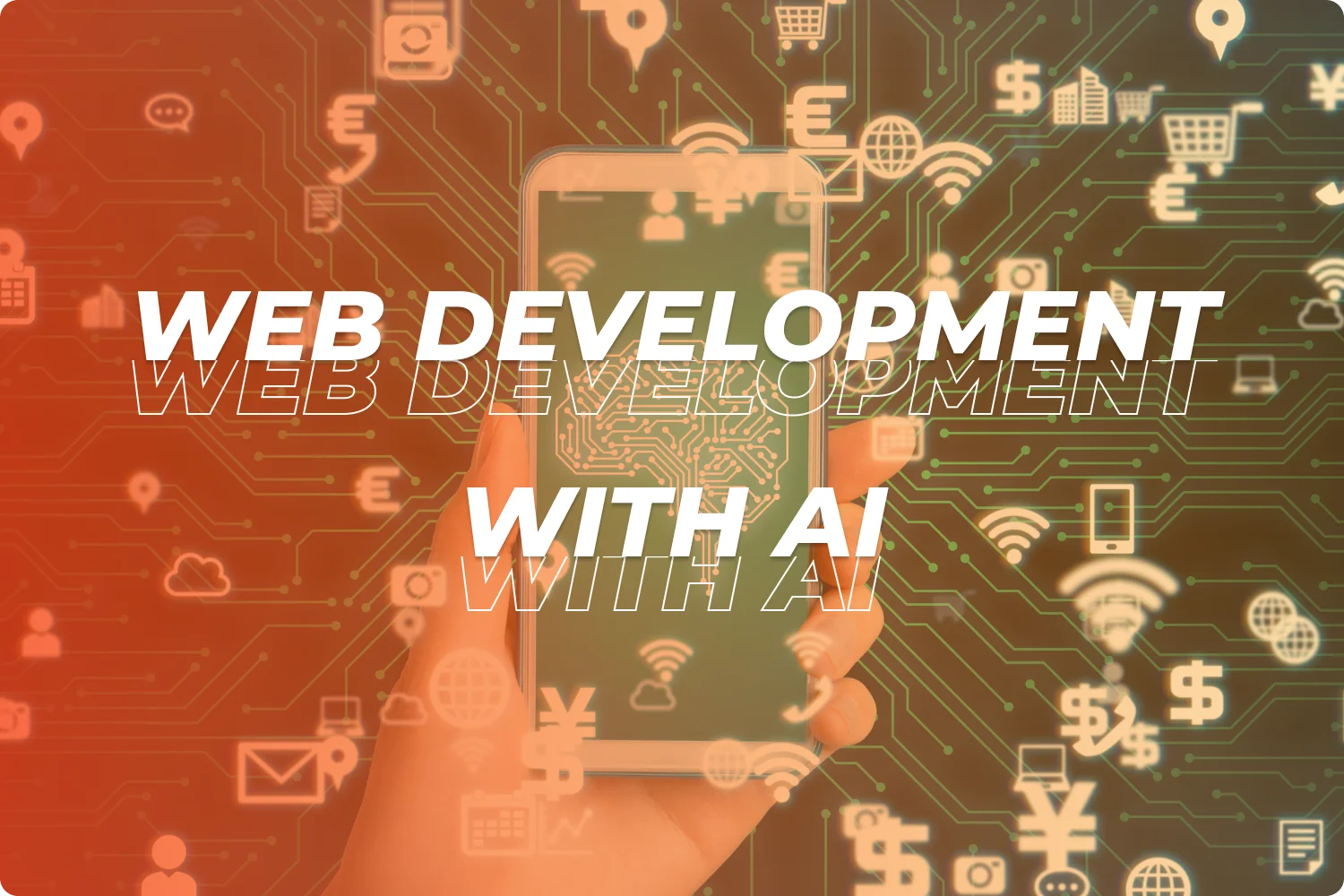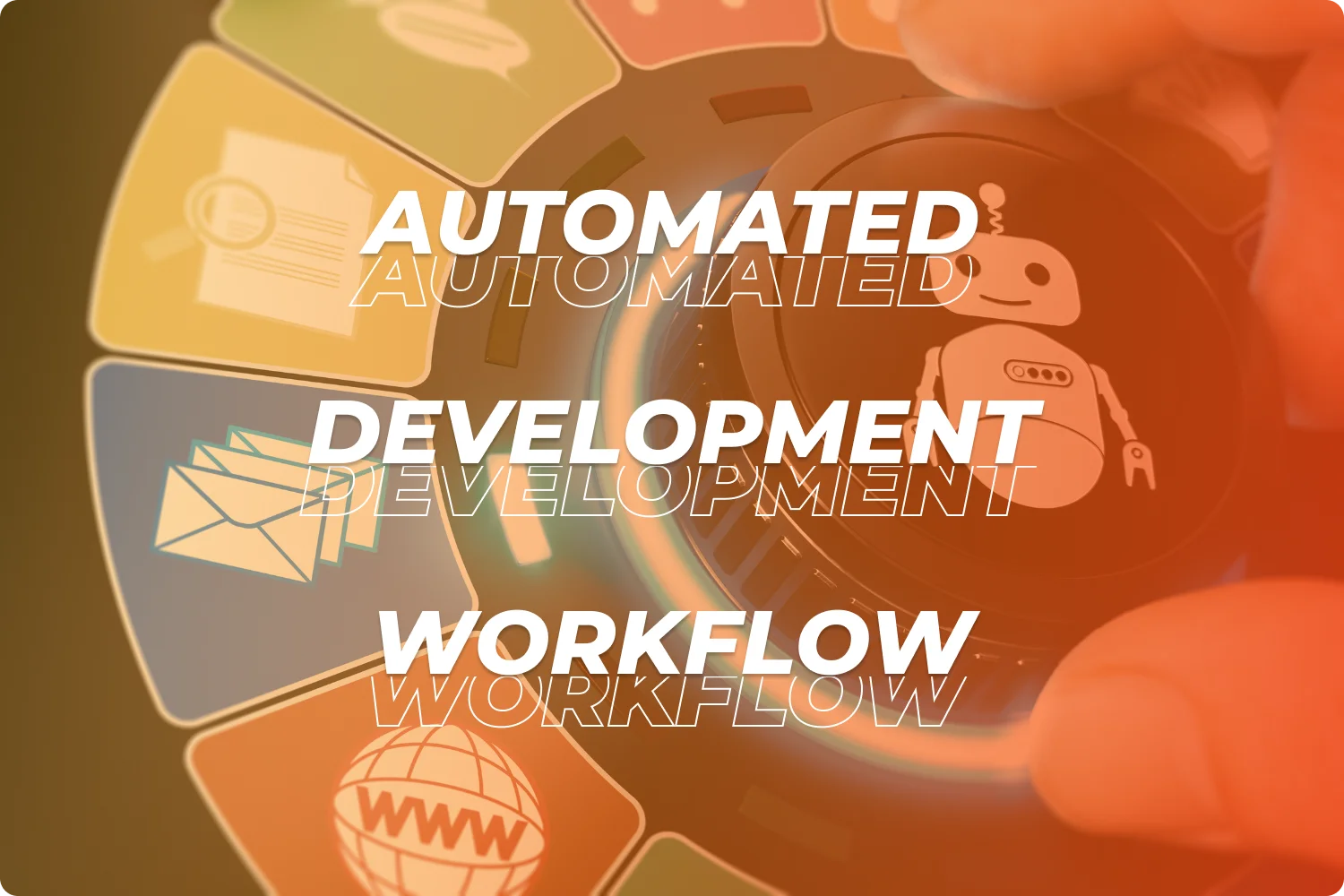Embracing AI in Web Development: How Artificial Intelligence Is Transforming the Industry
Artificial intelligence has quickly become one of the biggest forces shaping digital industries today. In web development, AI adoption has moved far beyond a futuristic idea; it’s happening right now.
I see it in what clients are asking for, and I rely on it in my own workflow to deliver faster, more personalised results. Small and medium enterprises, IT managers, and web developers across the UK are experiencing these changes first-hand as AI tools change the way sites are built, managed, and scaled.
How AI Is Already Changing Web Development
AI is not just a headline now; it’s threaded through every part of building and running modern websites. The earliest use cases mostly focused on chatbots or basic content recommendations, but things have developed fast.
Today, I work with tools like GitHub Copilot and Tabnine, both of which suggest code in real time as you work. These tools help me cut down repetitive tasks and speed up writing clean, consistent code. If I get stuck, Copilot is there to offer context-aware suggestions based on the languages and frameworks I’m using.
For those wanting to see more examples, GitHub Copilot gives a good overview of its key functions.
Design tasks are also changing quickly. Figma’s AI features can automate design tweaks or generate entire layouts from prompts, allowing me and my team to focus on tailoring details for users instead of building every element from scratch.
Site builders such as Wix ADI (Artificial Design Intelligence) and Builder.io allow anyone to create the backbone of a site quickly, with AI guiding design and layout decisions. Even for those with almost no technical background, these tools make it possible to produce a good-looking site that functions well—though for more advanced needs, I still rely on deep technical skills and expert support.
Nowadays, features like automated image optimization, smart color palette suggestion, and text generation help web designers and developers increase both efficiency and creativity. I’ve observed that even seasoned professionals leverage these smart features to save time and reduce burnout on repetitive tasks, freeing their energy for brand-specific innovation.
AI also assists with troubleshooting and maintaining existing sites. For instance, AI-driven log analysis tools can monitor site performance in real time, flag emerging issues, and provide recommendations to resolve bottlenecks. These logs are analyzed instantly, so I can get ahead of potential downtime.
As projects scale, machine learning models help balance loads, predict traffic spikes, and suggest upgrades before bottlenecks interfere with user experience. All these innovations make the development process smoother and more reliable across the board.
A Look at the Main AI Powered Tools in My Workflow
- GitHub Copilot: Offers real time coding suggestions, autocompletes functions, and helps flesh out boilerplate code based on current project context.
- Tabnine: Uses AI to analyze project-specific code to suggest smarter completions than basic autocompletes.
- Figma AI: Quickly adjusts layouts, analyzes design balance, and even drafts full UI concepts to kickstart projects.
- Wix ADI: Starts with a few questions and builds a basic, usable site independently, cutting initial setup time dramatically.
- Builder.io: Delivers drag and drop controls, with AI-driven optimization for layouts, images, and target devices.
These platforms represent just a sample of what’s available. Nearly every new project now comes with some form of AI built in, from content suggestions and SEO optimization to automated code generation.
For more complex needs or unique branding requirements, manual customization remains critical, but AI tools still save valuable time and effort along the way.
In the coming years, I expect to see more all-in-one AI development environments and stronger integrations between major code, design, and deployment platforms, making advanced site features even more accessible.
Automation in Coding, Testing, and Deployment
AI-driven automation is one area where I’ve noticed a real difference in how quickly projects move from draft to deployment. For example, smart testing tools use AI to check code for errors, security gaps, or style inconsistencies as I write.
By catching problems before they reach production, these tools help maintain both speed and quality. Some frameworks even use AI powered visual regression testing, which compares site visuals between code changes and flags differences automatically, making it easier to spot anything that breaks user experience.
Deployment workflows have also become more seamless thanks to AI. Automated systems can predict the best timing for releases, monitor site health, and roll back updates if they detect something has gone wrong. Integrating these platforms means I spend less time on manual checks and more on building features or tailoring the site to user needs.
Furthermore, web developers can now utilise AI cloud services that automatically optimize server configurations and resource usage, saving money and increasing site performance as user traffic shifts throughout the day. This flexible and responsive approach is a game changer for businesses aiming to run always-on, reliable online platforms with minimal manual oversight.
No Code and Low Code Site Building: Lifting Up Non Developers
One of the most noticeable changes brought about by AI is the rise of no code and low code web platforms. These tools allow people with limited or no programming experience to create and manage websites using visual editors and natural language instructions.
With chat powered assistants or block based interfaces, it’s possible to assemble a site, set up ecommerce features, or connect to external apps in a matter of hours instead of weeks. This accessibility has opened the digital business landscape for many UK SMEs who simply want to get online without huge upfront costs.
Despite how easy it is to get started, there are still limits to what these platforms can handle. When it comes to advanced integrations, performance tuning, or custom app features, I find my expertise comes into play to extend beyond the AI’s boundaries.
AI can lay down the structure, but expert help is still needed to make sure a site performs well and stays secure as it grows.
Additionally, as digital standards continue to change, keeping websites accessible, mobile responsive, and SEO friendly often requires ongoing human input. AI may enable speedy prototyping but tailoring those sites to reach their full potential calls for real world knowledge, creative problem solving, and deep understanding of client goals.
What truly stands out is how these AI-powered platforms foster innovation within small teams. Features like AI-based content generation, automatic image tagging, and instant site translation empower business owners to grow their presence internationally without hiring large technical teams.
The reach and impact of web projects are no longer limited by staff size or budget, and that’s an exciting change in the digital business landscape.
Personalised User Experiences with AI
I regularly see AI making a big impact in how sites interact with users. AI algorithms can track user behaviour in real time, picking up on what people click, hover over, or skip completely.
This data allows for dynamic content; showing one visitor a product recommendation that matches their browsing history, while surfacing a different call to action to someone visiting for the first time. This level of personalisation wasn’t possible at scale without AI’s ability to crunch huge data sets and make quick decisions.
Adaptive layouts are an extension of this idea. Sites can now respond not just to screen size, but to user preferences, chosen accessibility settings, or predicted intent, making things look and feel tailored for everyone.
These features don’t just impress users; they increase engagement, drive conversions, and help sites stand out in crowded marketplaces. For example, ecommerce sites can use AI to instantly offer up-to-date deals or restock alerts to users most likely to convert, increasing both sales and loyalty.
As the data grows richer, individual user paths can become more intuitive and frictionless, further raising satisfaction and long term retention.
AI also gives a boost to the development of multilingual and region-sensitive websites. Automatic language detection and content adaptation based on geographic location or user history ensure a more relevant experience, helping businesses resonate with audiences from different backgrounds and cultures without manual intervention on every detail.
Stepping Up UI/UX Through AI Analytics and Design Tools
Good design is about more than looks. With AI-driven behaviour analytics, I learn where users struggle, where they drop off, and how their journeys can be improved.
Heatmaps, scroll analysis, and AI generated usability reports show clear patterns that help me make smarter design decisions. Design to code tools can even translate Figma or Adobe XD prototypes into production ready HTML, CSS, or React components, streamlining the development process further.
For teams handling many web projects, these AI tools mean fewer blind spots. They catch patterns I might otherwise miss and allow for quicker iteration based on real feedback, not just gut feeling. By pairing this data-backed approach with creativity, UI and UX design becomes more targeted, more inclusive, and more effective.
Advanced systems now allow designers to experiment with color, font, or layout combinations, getting instant AI feedback on likely accessibility and user reaction. This feedback loop results in interfaces that not only look good but also foster better user interaction, accessibility, and clarity.
Teams also benefit from AI-driven collaborative features. Some design tools offer real time translation between design and development teams, flagging inconsistencies or missing assets before the final handoff.
This prevents costly backtracking and makes sure projects meet deadlines without compromising on quality. With this synergy, the entire production pipeline becomes more synchronized, agile, and responsive to feedback.
Business Benefits: Speed, Cost, and Scalability
AI powered web development brings some direct business advantages. The first thing I notice is how much faster new sites launch.
AI automates repeated tasks, suggests fixes instantly, and fills in content templates where needed, so sites are up and running sooner. This faster delivery keeps clients happy and lets businesses respond to market shifts quickly.
Project costs also shrink. With AI handling the less creative work, I focus my time on what really matters for the client. This means better use of budget, fewer hours wasted on minor tweaks, and lower total spend to get a great product live.
As a business grows, AI powered tools also scale with it, handling extra traffic, tailoring user experiences, and helping manage site updates without needing a major overhaul each time.
On top of that, advanced platforms can anticipate bandwidth requirements, warn teams about unusual traffic, or patch common vulnerabilities without manual effort. In turn, companies minimize downtime risks and maximize site performance as needs change.
AI also brings flexibility in managing content and marketing campaigns. Automated scheduling, A/B testing, and content optimization tools powered by AI allow businesses to tweak messaging or visuals for specific audiences or time frames.
This not only keeps websites fresh and relevant but also boosts user engagement, clickthrough rates, and customer loyalty. With ongoing feedback and machine learning, each successive campaign gains from the data of previous runs, letting teams consistently take their results up a notch.
Challenges: Privacy, Quality, and Human Oversight
As with any tool, AI’s strengths come with trade-offs. Privacy concerns often top the list, especially when user data is used to drive personalisation. I always ensure that any tracking or analytics are GDPR compliant, and I’m upfront with clients about how data is collected and used.
Relying too much on AI can introduce errors or let unexpected bugs slip through, so I always combine automated quality checks with experienced human review before launching anything to the public.
Human oversight is really important. AI is great at spotting patterns, but it still lacks the nuance and flexibility of a developer who knows how the client’s business really works.
There’s also a risk that too much automation can lead to generic experiences or technical debt if teams fail to keep an eye on what the AI is producing. For those reasons, I use AI as a partner; it speeds up work and offers insights, but final responsibility always sits with me and my team.
A further concern is algorithmic bias. AI models trained on incomplete or non-diverse data can inadvertently reinforce stereotypes or offer suboptimal results to some users.
Regular evaluation of training data, transparency about how AI suggestions are formed, and opening up results to manual review are steps developers and businesses must take to ensure outcomes remain fair and equitable for all visitors.
Where AI is Heading in Web Development
The next few years will see even bigger AI advances in web development. I’m already starting to see tools that turn natural language into code—a process known as natural language programming.
For example, telling an AI what feature or section I want and having it generate the code directly saves a huge amount of time for prototyping and brainstorming. Some cloud-based environments even generate APIs or data pipelines with just a few sentence prompts, making collaboration between business and development teams smoother than ever.
Autonomous agents are another area of growth. These are AI systems that can handle entire maintenance tasks; testing, updating dependencies, or fixing minor bugs, without direct input.
While early models are promising, it’s clear that upskilling will be essential for any business wanting to make full use of these tools.
Keeping up with the latest technologies, learning how to manage AI-driven processes, and investing in staff training are all smart moves for staying ahead. Soon, we may see web design agencies where AI not only automates code but also drafts editorial calendars, manages hosting resources, or even predicts trends based on industry data—setting an entirely new bar for speed and flexibility.
AI is also starting to intersect with augmented and virtual reality on the web, using real time image and speech recognition to build interactive, immersive experiences. As hardware and connectivity improve, AI powered web applications could let users step into fully personalized digital storefronts or learning environments from any device, revolutionizing how online content is delivered and consumed.
Preparing for the Future: Why Adapting Matters
Adopting AI is no longer a choice reserved for tech giants. From my own experience, even small businesses can benefit—if they’re ready to adapt.
This means reviewing existing workflows, seeing where AI fits naturally, and trusting expert input when tackling things outside template solutions. By combining AI’s speed and insights with human creativity, web teams can deliver sites that engage, sell, and grow with their audience.
FunctionEight and similar firms help bridge that gap: bringing technical skill, up-to-date knowledge, and personal support to UK organisations feeling overwhelmed by digital change. Whether you’re starting from scratch, upgrading an old site, or exploring new features, embracing AI alongside a skilled team is a good way to stay future ready.
For anyone starting out, the smartest strategy is to stay curious. Watch for how established brands use AI to streamline customer journeys or content management. Experiment with new tools on personal projects, seek advice from industry peers, and attend webinars or local workshops focused on AI in web development.
The future of the web will be defined by those who aren’t afraid to experiment, learn quickly, and strike a balance between machine-driven performance and human-driven insight. If you’re ready to grow or future proof your business online, now’s the time to get involved.
Frequently Asked Questions
Question: What areas of web development benefit most from AI right now?
Answer: AI currently has the biggest impact on coding assistance, bug detection, automated testing, design prototyping, user behaviour analytics, and content personalisation. These speed up site creation and help teams make more data-driven decisions.
Question: Can AI create a website without any human involvement?
Answer: AI powered platforms can build basic websites independently based on templates and instructions, but for custom needs, integrations, or unique branding, expert involvement is still really important to get the best results.
Question: Are AI built websites secure and GDPR compliant?
Answer: Most reputable AI builders offer good security features and follow GDPR standards, but human oversight ensures that compliance is maintained as sites evolve and new data practices are introduced.
Question: How can UK businesses keep up with the pace of AI-driven changes?
Answer: Regular training, working with experienced web partners, and following updates from leading AI and web development platforms keep businesses competitive and allow them to incorporate new tools as they become available.
Ready to Explore AI for Your Website?
Whether you’re starting from scratch, modernising an existing site, or exploring automation tools, FunctionEight can help. Our team combines technical expertise with real-world experience to guide UK businesses through AI-driven web development—securely, efficiently, and with a focus on long-term growth.
Contact us today to discuss how AI can streamline your web projects, improve user experience, and position your business for the future.








